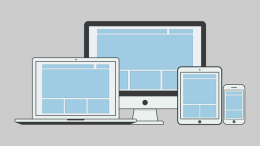Guest author Lindsey Irvine is the director of business development and strategic partnerships at Salesforce and heads up its Salesforce Wear developer platform.
We’ve been hearing a lot of buzz around how wearables will continue to enhance our everyday lives. From steps and calories, to sleep and diet, wearables are starting to show their influence on our personal lives. But what about the business opportunity and benefits to our professional lives?
This year alone, we’ve seen the introduction of everything from smart rings, watches and connected headbands. As exciting as they may seem for individuals, it’s actually the business implications of wearable devices that have many of us in the enterprise taking note.
See also: The Greatest Potential—And Obstacle—For Wearables At Work
According to the International Data Corporation’s (IDC) recent Worldwide Quarterly Wearable Device Tracker, it is estimated that 72.1 million wearable devices will be shipped in 2015, up 173.3 percent from 2014. Additionally, a study by Salesforce Research found that not only do wearable users experience an improvement in their business performance, but 79 percent agree that wearables are, or will be, strategic to their company’s future business success and 86 percent plan to increase their wearable investment.
These growth projections signify that it’s no longer a question of “if” but “when” the disruptive potential of wearable technologies will become more mainstream. When it happens, the biggest beneficiaries of the technology will be businesses in a variety of verticals.
Wearables Are About To Strap Themselves To Our Work
Wearables for work provide an opportunity to significantly improve productivity, efficiency and even safety, creating tremendous opportunities for those taking advantage…and notable risk for those not preparing a strategic response.
Here are just a few important ways that the wearables revolution for business is well underway, and some observations regarding what’s needed to drive the next phase of growth:
Intelligent Apps
At the moment, much of the wearable discussion is centered on the hardware devices themselves. Talk of the apps that will make those devices intelligent, workflow-enabled and truly disruptive is still in its early stages.
However, a focus on wearable apps—apps that will change the way we work and help bring complex business processes to life in a new, simple, visually compelling, action-oriented way—will take these devices from gadgets to valuable tools for the business. By 2017, Gartner predicts that wearable devices will drive 50% of total app interactions.
As wearable momentum grows, we see incredible parallels to the early days of the smartphone. Apps were instrumental in the proliferation of the smartphone and its ubiquitous usage, and now industries are being transformed based on the model. At Salesforce, we believe an expanding enterprise app ecosystem will fuel wearable tech adoption and help drive transformations in how we live and work.
Context In The Cloud
Wearables will enable teams to be more connected to the digital world while being more present in the real world.
Checking a mobile phone or opening a laptop during a meeting, or while out in the field, can be a distraction and a little time consuming. But by glancing at a connected smartwatch or peering through connected eyewear, a sales rep or field service technician can quickly and discretely access critical information, all while being hands free. The key will be to assure that wearable technology and enterprise wearable applications are able to leverage business data to highlight the right information, at the right time, to drive the right business action.
Tapping into a complete 360-degree view of your customers via data that your company has added to its CRM, will drive the relevant business actions, insights and workflow that are needed to accelerate improved efficiency and productivity. The potential here is incredible.
BYOW (Bring Your Own Wearable)
When people fully embrace new connected technology, they want to use it in their personal and professional lives. Forward-thinking employers recognize that an employee’s use of personal technology can increase operational efficiency and productivity. This presents a tremendous opportunity for software developers to build business applications that IT organizations can push down to employees’ devices, including wearables.
Some partners and developers are already doing just that: for example, Alpine Metrics offers a data analytics app for smartwatches called Intelligent Forecasting, which allows sales professionals to get a quick and consistent view of their trending sales. NewVoiceMedia has created a smartwatch app that takes caller ID to the next level, and Vlocity has given sales and service professionals within communications and media companies new ways to identify sales opportunities and provide better customer service, right from your wrist.
Companies that are implementing pilot programs for wearables are seeing early successes. By getting ahead of the latest technologies, early adopters are able to provide input and help shape the future of wearable technologies, making them smarter, faster, more functional and more tightly integrated with daily business operations. The possibilities for wearables in the workplace are truly endless and we can’t wait to see what the next chapter has in store.
Lead photo by Intel Free Press

















